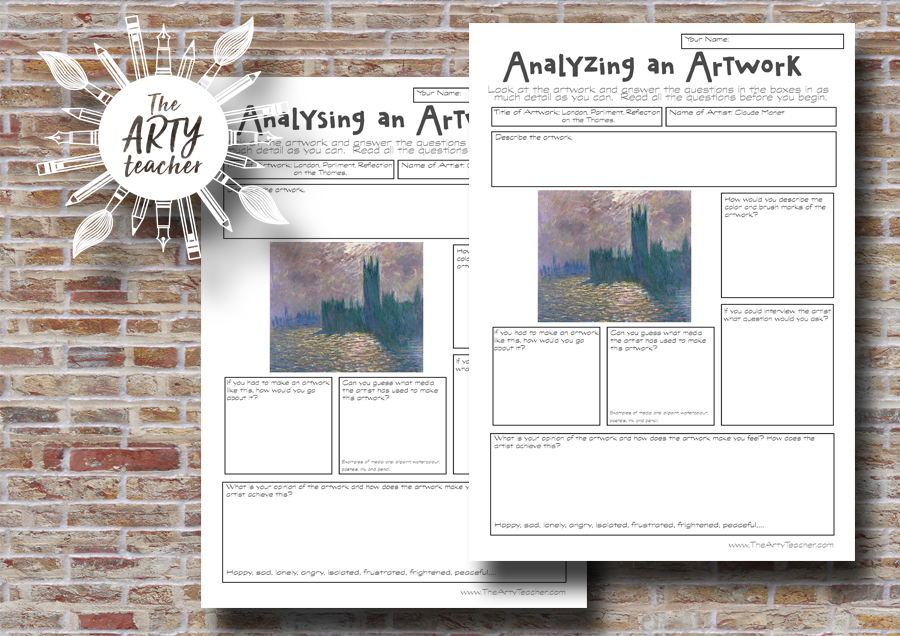Analysing an artwork is a key skill for students. Teach your students how to analyse an artwork using this one-page worksheet. It uses Blooms Taxonomy to create higher-order thinking questions that cover describing, understanding, analysing, evaluating and creating.
There are two versions of this resource, one with the word analyze & color and one with analyse and colour. There is also an A4 colour picture of the artwork so you can put a few on desks and then print the worksheet in black and white to save on printing costs. You can print this resource A4 or A3 depending on how much you want them to write. To accommodate really able students I tell the class they can continue on the back should they wish to do so.
Choose to guide your students through this worksheet or use it as a test to see what they can achieve independently. This is great if your students are learning about the Impressionists or Impressionism.
There are more ‘analysing an artwork’ resources on The Arty Teacher.

Comments
One response to “Analysing an Artwork – Monet”
I use a more detailed and formal process for analyzing and responding to artworks, so at first I wasn’t sure if this would be useful. In the end I think it will be great for students to experience a variety of methods of responding to artworks, so I’ve added this to the mix. I guide my students (high school juniors and seniors) through examples of formal critique responses with six stages: First Impressions, Factual Description, Analysis of Elements and Principles, Interpretation, Background information, and Informed Judgement and Conclusion. We practice with an artwork or two together – whole class, then break off into small groups to work through another image or two (with jot-notes and a handout). My students also use these stages to write a formal critique response essay. We follow all of this up with a more creative response – by creating an image in response to an artwork. This worksheet provides a much more informal approach, which I think adds something important – it’s not always necessary to be so formal… This is another approach.